2025 Triumph Tiger Sport 800 Review – First Ride

Look out, the Tiger Sport 800 is on the prowl
The motorcycling landscape is a place of wondrous flux as manufacturers vie for position amongst current trends. It's called striking while the iron is hot, folks, and it's what keeps the lights on around here. For some time now, the traditional sport-touring class has been left out of the fun, relegated to the room's corner chair, where it's watched a bullish ADV segment enter the market's collective garages – oh, the indignity! Yet, change is afoot, as British marque Triumph lends another helping hand to the conventional sport-touring segment, adding to its ever-growing Tiger family with the 2025 Triumph Tiger Sport 800.
2025 Triumph Tiger Sport 800
Is sport-touring on the rise once again? We gave our Magic 8-Ball a firm shake and it said, “Signs point to yes.” Triumph is banking on a resurgence of the traditional sport-touring class with its road-going Tiger Sport 800 and this might be one of the bikes pushing to the front of the line.
Highs
- A torquey yowling Triple with loads of versatility
- Comfortable digs
- Cat-like reflexes (handling)
Sighs
- Por que não há heated grips as standard, Triumph?
- Axial master cylinder lacks a bit of feel
- It’s a sign of the times that we don’t get fully adjustable suspension with a $12K+ MSRP
Few moto segments warm the cockles of this reviewer's heart like a good ol' fashioned sport-tourer does. What else nearly matches the sporting virality of your average naked, couples a dose of luggage-friendly grocery-getting practicality, and finishes things off in climactic fashion with all-day touring comfort? Yes, the ADV-tourer derivatives with larger front wheels often flirt with the same idea and even sprinkle the loose concept of riding off-tarmac. But nothing beats a 17-incher's outright grip and handling on the streets. No way, no how, making the ADV-adjacent Tiger 850 Sport and Tiger 900 GT look a bit clipped when lined up next to the studly Tiger Sport 800.
As is the case with a great many things in life, whether that be politics or home-invading-porridge-thieving-trollops, the middle is where many land. More specifically, the middleweight sport-touring class that is receiving attention via fellow road-focused competitors like the BMW F 900 XR ($12,370), KTM 890 SMT ($13,949), and category favorite, the Yamaha Tracer 9 ($12,599). The Ducati Multistrada V2 ($15,995) is undoubtedly in this conversation, though again, it hangs a 19-inch hoop up front, which isn't quite apples to apples – that'd be pear (Triumph) to quince (Ducati) if you're seeking agricultural accuracy in your metaphors.
The shared DNA between the Tiger Sport 660 and Tiger Sport 800 is as plain as a pitched tent, though it's no hackneyed copy-and-paste job from Hinkley. Save for the dash, cast-aluminum wheels, rear brake, and a few extraneous engine bits, anything not completely new is seeing a redesign.
Still, platform familiarity is at the forefront of design by building on the lower-displacement sibling's frame and rough geometry, capitalizing on its svelte packing, harnessing its hot-footed road manners, not to mention revisiting its neutral riding position. The breed is bettered via elevated brake and suspension specification, which raises the question of additional performance. Scratching that itch is a virtually all-new Inline-Triple cylinder engine featuring the brand's hallmark screaming 120-degree crank configuration (the T-plane Triples with their 180-degree cranks power the ADV range of bikes). At a reasonable $12,495 MSRP, the 800 is a matured, more substantial sporty bike reaching to grasp riders rising through the ranks or those with more than a few riding seasons under their belt.
These are just a few ruminations one might have while sitting in Portugal's scenic Algarve region, gearing up for a first ride aboard Triumph's mid-sized kitty. Despite the staff's best efforts to bury the sausage in anticipation of global motorcycle media, we experienced the full gamut of riding conditions: Wind, rain, fog, and a few dry spells to sow wild oats. In truth, it's an authentic experience an owner might face on an extended jaunt.
Grrr, Baby! Very Grrr!
Let's peer into the Tiger's beating heart, shall we? What awaits is the brand's latest punchy 798cc Triple, sharing its general architecture with the 660 and 765 powerplants. According to brand reps, those sultry smooth mills lend their cylinder designs, shaft centers, and barrel angles, yet beyond being nearly an identical physical size, further lineage links are spied in the spec sheet. We'll note the same 78mm bore as the Street Triple 765 platform, but where the Tiger clears its own path and gains an extra 33ccs is with a longer 55.7mm stroke (+2.3mm) as it claws for torquier figures.
Now, those changes aren't done in isolation, going well beyond a mere tweak and tune. To that end, a fresh trio of 44mm throttle bodies are bolted onto a new cylinder head featuring narrower valve diameters and reworked porting, followed by redesigned cam profiles. Digging deeper, updated pistons sit atop revised connecting rods and a model-specific crank, along with a redeveloped counter-balancing strategy that adds a meatier tickle to the Triple's typically streamlined feel. Moving lower, the rejiggered gearbox is replete with beefier cogs handling power increases and optimized ratios to suit, delivering excellent shifts via the standard bi-directional quickshifter.
That's all to say we're working with a claimed 113 horsepower at 10,750 rpm and 61.9 lb-ft. of torque at 8,500 rpm, which is quite inviting in more ways than one. Tug the Tiger's tail and it leaps into action, thanks to ultra-linear grunt across the powerband – it goes both ways, too, since there's far more engine braking than we're used to. With that signature 120-degree screamer configuration on hand, it'll still shriek toward the redline like its street-focused cousins, though not quite as frenzied. You're still likelier to short-shift and grab fistfuls of its midrange than bounce off the limiter like a loon.
This isn't a one-trick-pony… err, cat, either, as its sheer versatility makes it a perfect match for the all-embracing sport-touring duties. Letting the revs fall a stone's throw above idle won't tease out a cough, spit, or fueling sputter when circling urban roundabouts, even a gear or two too tall. It's eager to please with bottom-end that just don't quit, which is a significant benefit when discussing do-it-all road bikes.
Helping tame the middleweight Tiger is an IMU-supported rider aid suite, including adjustable traction control (Rain, Road, and Sport; Off), cornering ABS (Road), and wheelie control (linked to TC). On brand for Triumph, those settings and your throttle map are corralled in three ride modes: Rain, Road, and Sport, adjusting things accordingly, as the names suggest. Oh, and cruise control is standard.
Triumph is displaying its prowess with expertly programmed fueling, yet we need to give a rare nod to the decidedly exuberant Rain mode that could easily be confused for Road. This isn't the usual depressing, limp-noodle throttle response all too common among wet-weather settings. Instead, it relies on the watchful eye of TC to keep you on the straight and narrow – quite effectively, mind you. At the opposite end is Sport, letting the Tiger's leash run out, where the cheekiest of front-wheel hovers is teased out during hard-driving corner exits. And in another rare moment, I'm left wishing for less restrictive wheelie control… on a sport-touring bike.
Naturally, the question of whether this new mill is encroaching on the Street Triple's territory arises. Jack rabbiting away with its high-revving hijinks, the 765 engine does its best work with the pistons pumping in the mid-range and upper rpm regions, where its 15 extra ponies are realized. That's what we'd want in pure sport settings or track days, as engineers intended, exhilarating as the day is long.
Where the 798cc's allure becomes undeniable is when we recognize its delicate balance between low-end thrust and tongue-wagging, rev-happy character. The Tiger's performance compromise, then, isn't much of a compromise on the street. Simply put, it'll come down to what floats your boat; they're distinct enough to create a choice.
Digging The Claws In
Oh, but all that would be for naught if its lively mill weren't stuffed into a chassis that could wrangle it into submission. The Tiger 800's steel-tubular parameter frame is a hand-me-up from the 660, with one subtle change meant to accommodate the larger throttle bodies. That's bolted up to what the brand says is a model-specific steel swingarm, though we wouldn't chastise anyone for mistaking it as a carryover based on appearance alone. In fact, geometry nearly mirrors one another with the steep rake nudged out a shade due to where it sits in the suspension stroke, and the wheelbase is lengthened marginally, thanks to longer final-drive gearing.
Mated to those bits is a redeveloped set of Showa suspenders, with a 41mm fork good for compression and rebound damping adjustment. Meanwhile, a Showa monoshock featuring a handy dandy remote preload adjuster and rebound clicker keep the rear in check. The only tweaks between the 660 and 800 are increased damping rates, mainly to compensate for its heavier 471-pound wet weight and increased potency. Yet, they also share a respectable 5.9 inches of wheel travel at either end. Luckily, the new setup straddles the divide between sporting aspirations and comfort, gobbling up rough stuff while providing balanced weight transfer when on the brakes or throttle. Dial in a bit of comp and a touch of rebound, and you're golden at spicier paces.
What all those facts and figures amount to is a spritely Tiger that's quick on its feet, which comes in handy when trouncing around the Portuguese hinterlands. The energetic 800 sits a bit taller than your average naked street bike, meaning its center of gravity is also hoisted a smidge higher. Often, lifting things too far north can work against a motorcycle, as is the case with leggier ADV machines. But the T800 sits roughly between the two and uses that raised COG as pinch-perfect leverage, where a light touch sees a vocal maneuvering reaction.
Confidence, precision, and poise underpin the Tiger's footwork, even translating on uninspiring wet asphalt. Of course, we owe a debt of thanks to the wet weather-proven Michelin Road 5 rubber, but the grip offered by the chassis is worth a generous nod. And on a day with mixed conditions, where the peg feelers likely felt safe, well, that pent-up handling frustration meant we had our way with them as soon as some dry tarmac was presented.
Triumph-branded J.Juan 4-piston calipers are stepping up to the plate, clamping into 310mm rotors. They'll never let you down, and outright braking power isn't questioned – especially when combined with the easy-to-reach single-piston binder and 255mm disc out back. Still, that axial master cylinder offers a firm pull but lacks some feel and one that isn't entirely up to snuff with the swish Brembo kit often found in the Triumph stash.
If we break out the blindfolds and saddle up each Tiger Sport, you'd be hard-pressed to size up a difference between the cushy digs. A casual reach to the bars and ample room to the footpegs play well in the sport-touring realm, which is accentuated by a manually adjustable windscreen that shields my 5-foot 10-inch frame nicely.
Some will see a 32.9-inch seat height and be intimidated – don't worry, the Triumph's midsection is slim, which eases our reach to the deck. Would the accessory heated grips ($250) we sampled be a welcome standard addition at this price point? Surely. As would the hand guards ($136). Alas, at least they're offered as options.
Batting The Yarn
A wallflower no more, the sport-touring class stood on the sidelines long enough but now stands ready and at attention. The Tiger Sport 800 is raring to go, bringing a twist on the 17-inch wheel middleweight ST segment by injecting youthful vitality into the mix. There's no doubt that the torque-rich 798cc Triple is casting a long shadow, leaving this reviewer quite smitten and arguably raising the bar against its competition – we'll let a thorough comparison story settle those quarrels. But, the class fundamentals aren't left by a need to try new things. No, agile handling, long-haul comfort, and a can-do attitude are enough to see that the Tiger Sport 800 is harnessing a positive mindset staring right in the mirror and saying, "I'm a star. I'm a big, bright, shining star." Time will tell if the motorcycling audience agrees.
Scorecard
Engine | 20/20 | Suspension | 12.5/15 | Transmission | 10/10 |
Brakes | 6.5/10 | Instruments | 4/5 | Ergonomics | 9/10 |
Appearance | 9/10 | Desirability | 10/10 | Value | 9/10 |
Editors Score: 90.0% | |||||
In Gear
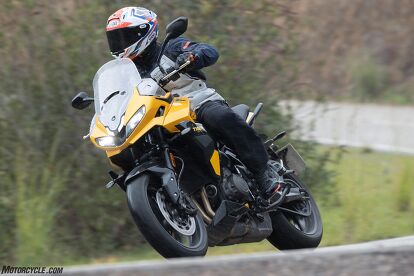
- Helmet: Shoei X-15
- Jacket: Alpinestars ST-7 2L Gore-Tex
- Pants: Alpinestars ST-7 2L Gore-Tex
- Gloves: Alpinestars Belize V2 Drystar (Discontinued)
- Boots: Alpinestars RT-7 Drystar
2025 Triumph Tiger Sport 800 Specifications | |
|---|---|
Engine Type | Liquid-cooled, 3 cylinders, 12 valves, DOHC |
Displacement | 798 cc |
Bore x Stroke | 78.0 mm x 55.7 mm |
Compression Ratio | 13.2:1 |
Horsepower | 113 hp at 10,750 rpm (claimed) |
Maximum Torque | 62 lb-ft. at 8,500 rpm (claimed) |
Fuel System | Bosch Multipoint sequential electronic fuel injection with electronic throttle control. 3 rider modes (Rain, Road, Sport) |
Exhaust | Stainless steel 3 into 1 header system with sided mounted stainless steel silencer |
Final Drive | X ring chain |
Clutch | Wet, multi-plate, slip & assist |
Gearbox | 6 speed, Triumph Shift Assist |
Frame | Tubular steel perimeter frame |
Swingarm | Twin-sided, fabricated pressed steel |
Front Wheel | Cast aluminium alloy, 5 spoke, 17 x 3.5 in |
Rear Wheel | Cast aluminium alloy, 5 spoke, 17 x 5.5 in |
Front Tire | 120/70 R 17 |
Rear Tire | 180/55 R 17 |
Front Suspension | Showa 41mm, upside-down separate function cartridge forks, adjustable compression and rebound damping, 5.9 inches wheel travel |
Rear Suspension | Showa monoshock RSU with adjustable rebound damping and remote hydraulic preload adjustment, 5.9 inches wheel travel |
Front Brakes | Twin Ø310mm floating discs, 4-piston radial calipers, OCABS |
Rear Brakes | Single Ø255mm fixed disc, single piston sliding caliper, OCABS |
Instruments | LCD Multifunction Instruments with integrated colour TFT screen |
Length | 81.6 inches |
Width (Handlebars) | 32.6 inches |
Height Without Mirrors | 54.6 inches / 51.3 inches (high / low screen position) |
Seat Height | 32.9 inches |
Wheelbase | 55.9 inches |
Rake / Trail | 23.8° / 3.9 inches |
Curb Weight | 472 pounds |
Fuel Capacity | 4.9 gallons |
Service Intervals | 10,000 miles (16,000 km) / 12 months (whichever comes first) |
Valve Service Intervals | 20,000 miles (32,189 km) |
2025 Triumph Tiger Sport 800 Review Gallery
We are committed to finding, researching, and recommending the best products. We earn commissions from purchases you make using the retail links in our product reviews. Learn more about how this works.
Become a Motorcycle.com insider. Get the latest motorcycle news first by subscribing to our newsletter here.

A lifelong interest in anything with two wheels, Nic combined his passion for motorcycling with a rare and mysterious skill known as typing to join the motojournalism ranks. Motorcycle.com's Senior Editor and sometimes club racer displays an unrivaled desire to sample baked goods across the globe and partake in post-track day celebratory pizza.
More by Nic de Sena
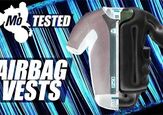

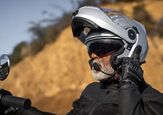
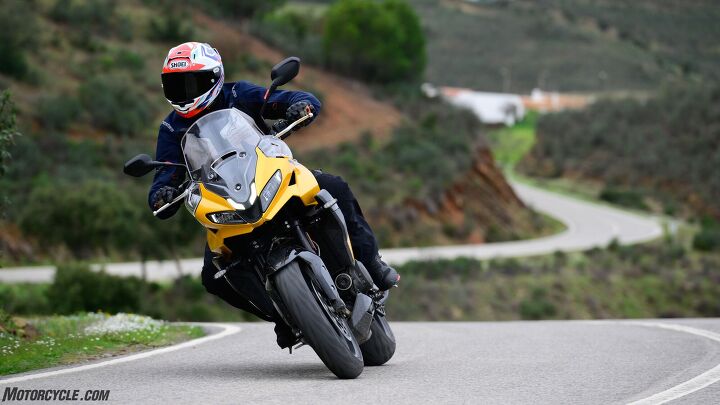








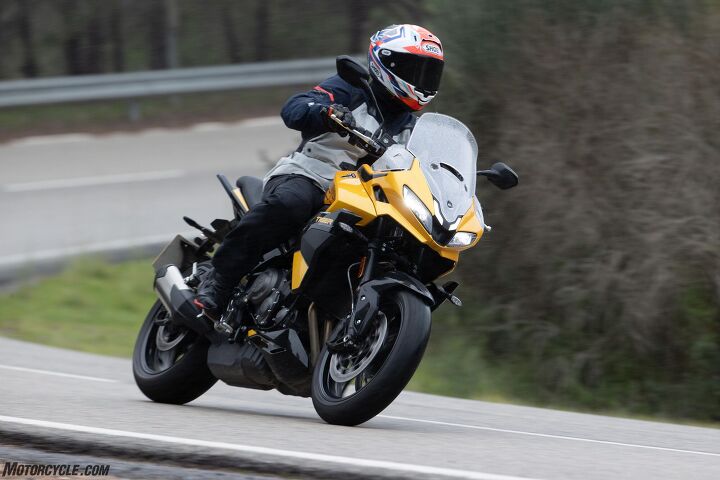
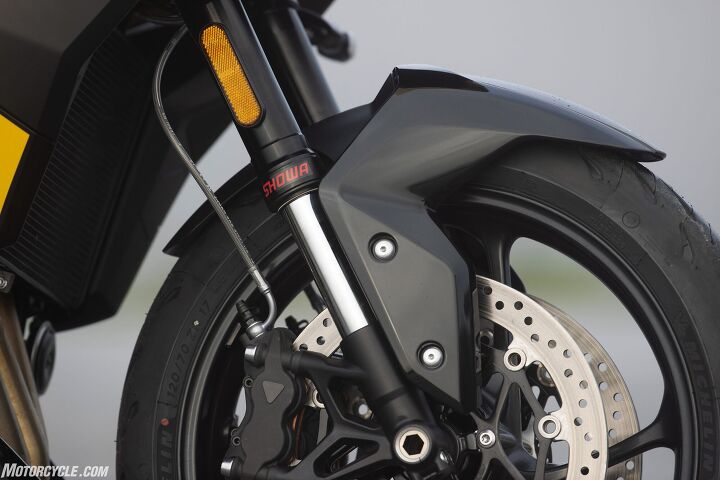
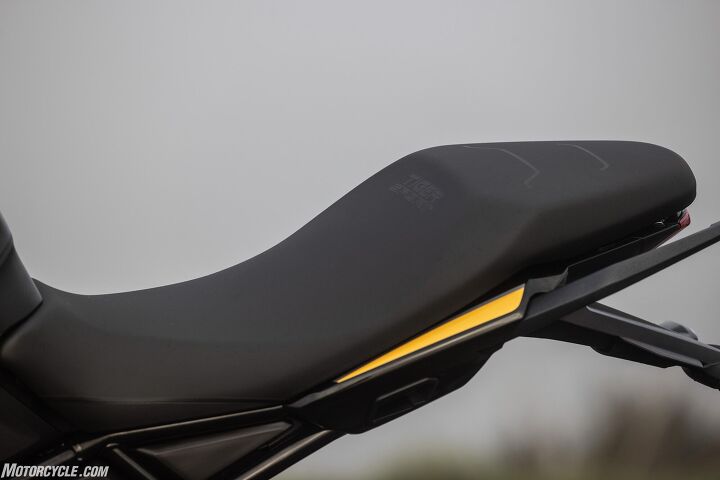
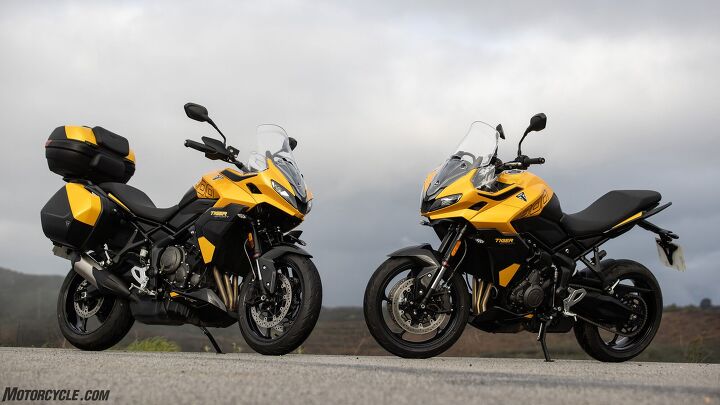
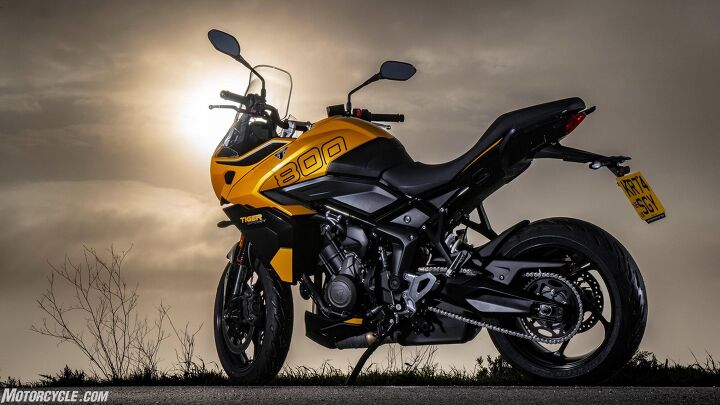

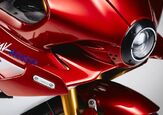
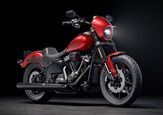
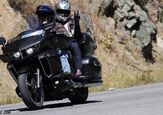

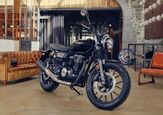


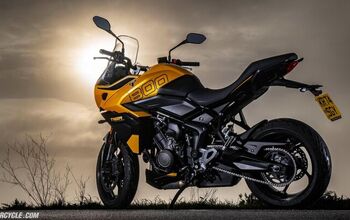

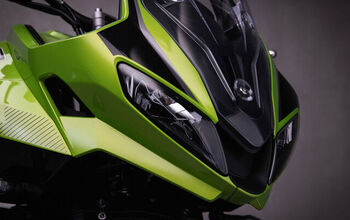

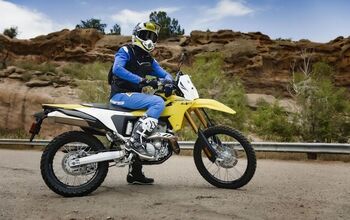




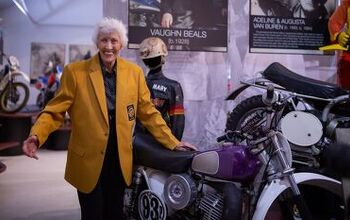
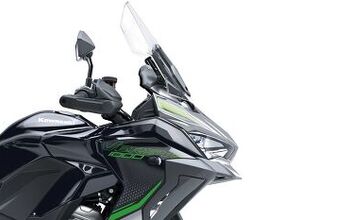


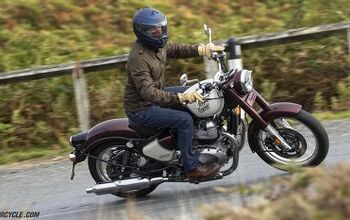
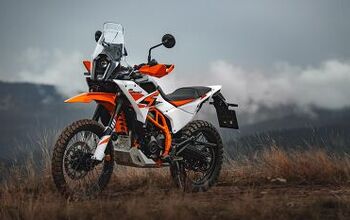
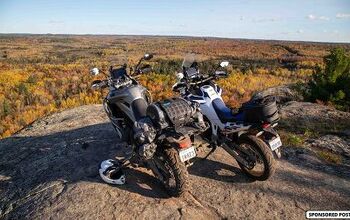
Comments
Join the conversation
So when will the premium version with proper adjustable suspension, Brembo brakes, leather saddle, etc. be offered?
Happy to follow! Keep the content coming!